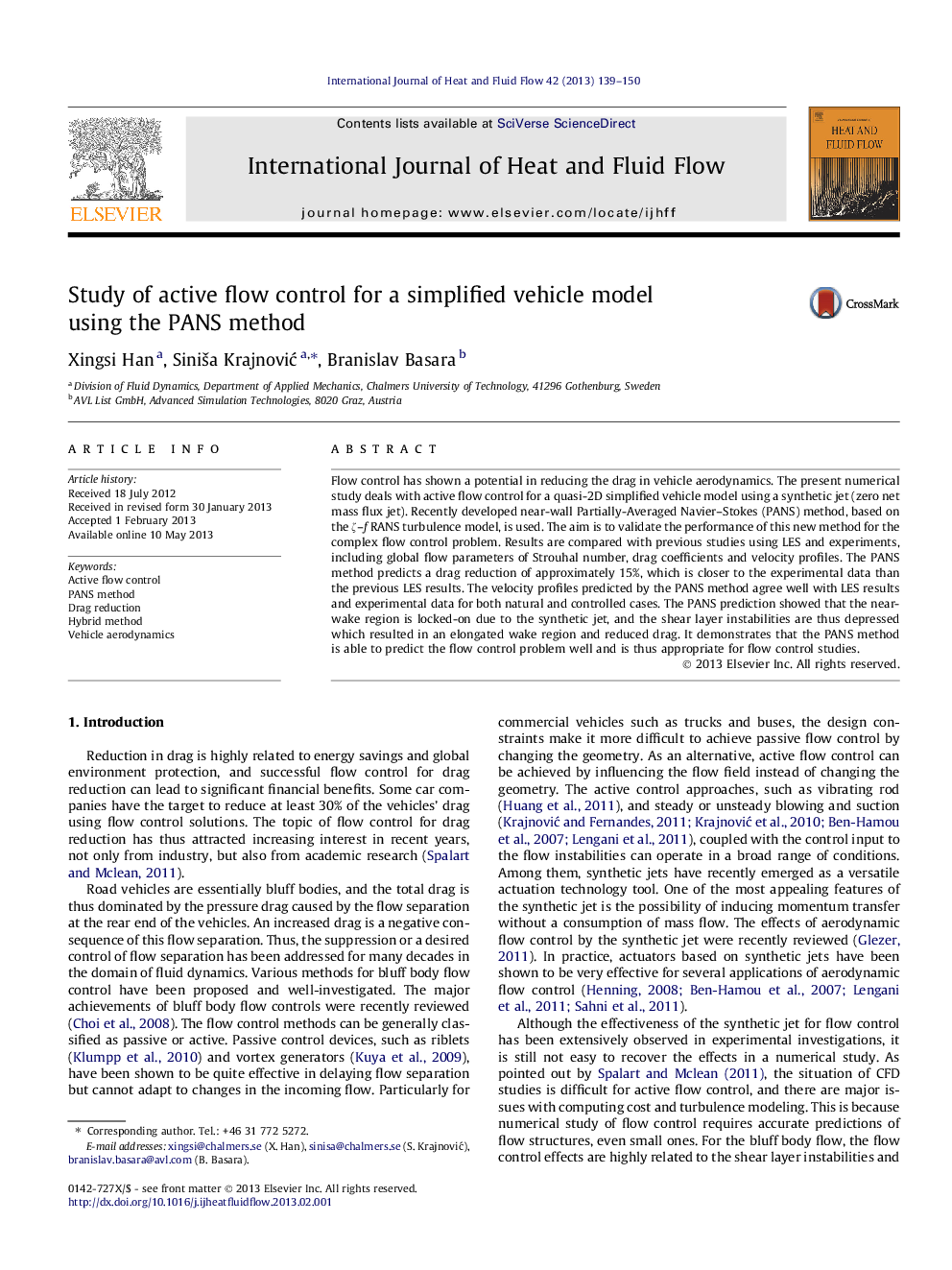| Article ID | Journal | Published Year | Pages | File Type |
|---|---|---|---|---|
| 655601 | International Journal of Heat and Fluid Flow | 2013 | 12 Pages |
Flow control has shown a potential in reducing the drag in vehicle aerodynamics. The present numerical study deals with active flow control for a quasi-2D simplified vehicle model using a synthetic jet (zero net mass flux jet). Recently developed near-wall Partially-Averaged Navier–Stokes (PANS) method, based on the ζ–f RANS turbulence model, is used. The aim is to validate the performance of this new method for the complex flow control problem. Results are compared with previous studies using LES and experiments, including global flow parameters of Strouhal number, drag coefficients and velocity profiles. The PANS method predicts a drag reduction of approximately 15%, which is closer to the experimental data than the previous LES results. The velocity profiles predicted by the PANS method agree well with LES results and experimental data for both natural and controlled cases. The PANS prediction showed that the near-wake region is locked-on due to the synthetic jet, and the shear layer instabilities are thus depressed which resulted in an elongated wake region and reduced drag. It demonstrates that the PANS method is able to predict the flow control problem well and is thus appropriate for flow control studies.
► A new PANS method is used to study the active flow control problem. ► Synthetic jet is used as flow control actuator. ► A drag reduction of about 15% is obtained by the PANS method, close to the experiment. ► The PANS predictions agree well with previous LES and experimental data. ► The PANS method can be used for flow control problems.
